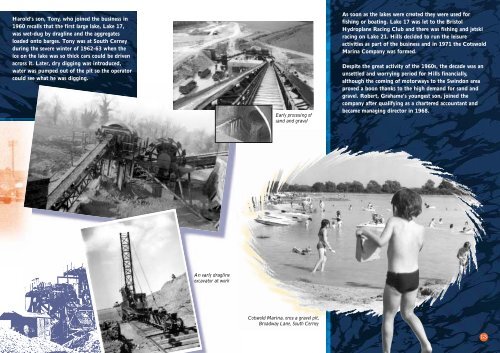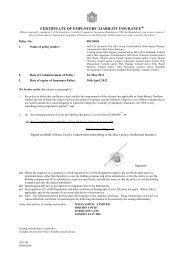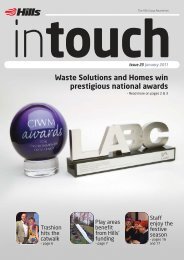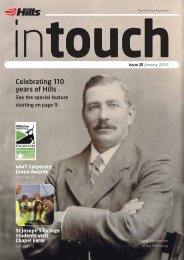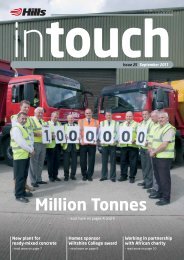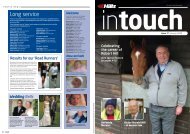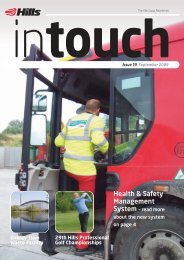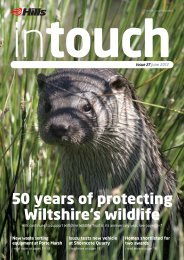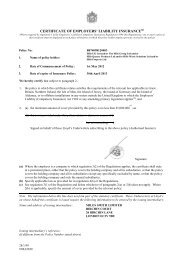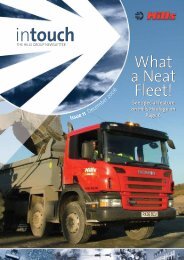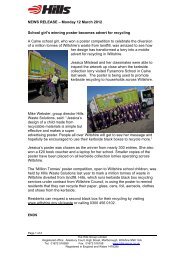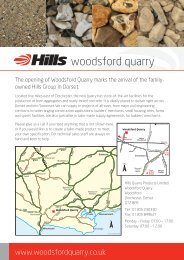by Anne Hayes - Hills Group
by Anne Hayes - Hills Group
by Anne Hayes - Hills Group
Create successful ePaper yourself
Turn your PDF publications into a flip-book with our unique Google optimized e-Paper software.
Harold’s son, Tony, who joined the business in1960 recalls that the first large lake, Lake 17,was wet-dug <strong>by</strong> dragline and the aggregatesloaded onto barges. Tony was at South Cerneyduring the severe winter of 1962-63 when theice on the lake was so thick cars could be drivenacross it. Later, dry digging was introduced,water was pumped out of the pit so the operatorcould see what he was digging.Early processing ofsand and gravelAs soon as the lakes were created they were used forfishing or boating. Lake 17 was let to the BristolHydroplane Racing Club and there was fishing and jetskiracing on Lake 21. <strong>Hills</strong> decided to run the leisureactivities as part of the business and in 1971 the CotswoldMarina Company was formed.Despite the great activity of the 1960s, the decade was anunsettled and worrying period for <strong>Hills</strong> financially,although the coming of motorways to the Swindon areaproved a boon thanks to the high demand for sand andgravel. Robert, Grahame’s youngest son, joined thecompany after qualifying as a chartered accountant andbecame managing director in 1968.An early draglineexcavator at workCotswold Marina, once a gravel pit,Broadway Lane, South Cerney13


